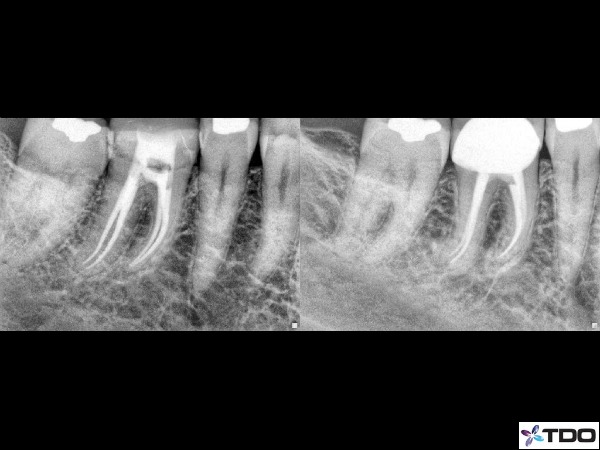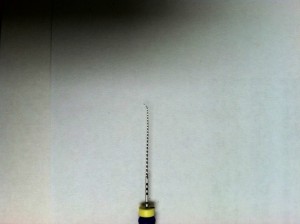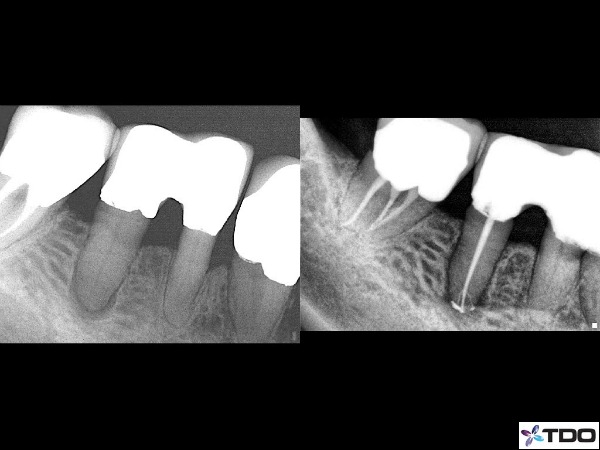Endodontic Pearls: A Few Tips From the Trenches
For this week’s blog, I thought I would include several treatment tips that anyone performing endodontics may find useful.
I started limiting my practice to endodontic therapy in 2006 and find that several easy to remember pearls help guide me through each every case. Each tip below may not apply to a specific case; however I hope that one or two may help at some point along the way.

Case 1: Post Op and 1 year Recall
1) Patency. The most important feature of the root canal system is often the apical terminus or the last several mm within a root canal. The apical terminus is where most of the lateral anatomy is found and where an endodontic infection communicates with the peri apical bone. Patency is the concept of maintaining a small file to or just slightly beyond the apical foramen throughout the endodontic procedure. I usually use an eight or ten file to maintain patency in a canal. After every step of instrumentation, I go back to my ten file and ensure that the file reaches the apical terminus. In doing so, we maintain a glide path down the root and prevent apical ledging or blocked canals.
2) Don’t rush to instrument the apex. After patency is achieved we want to ensure we can passively take files to the apex without too much stress on our files. This often involves instrumenting to the apex with a 15-20K hand file before the introduction of rotary files. I would strongly recommend taking a 20 hand file to length prior to any rortary instrumentation. If a rotary file encounters resistance when progressing apically, I will often re-instrument with hand files or go back to the preceding rotary file before pushing onward. Adequate coronal enlargement can also be helpful although we want to avoid removing too much coronal dentin and compromising the strength of the tooth. I rarely use anything beyond a three gates for coronal enlargement.
 3) Small Bends on hand files:
3) Small Bends on hand files:
There are very subtle twists and turns throughout a canal system. If we are not careful a ledge or block is easy to create especially in the last few millimeters of a canal system. Placing a small bend on a hand file can be very helpful to capture that elusive apical anatomy that can be so crucial to the success of a case. The small bend can also help slip into a canal system that splits from one main canal into two.

Case 2: Bicuspid with apical anatomy captured
4) Take your time. Endodontics is a very technique sensitive procedure. Allowing adequate time for a case to ensure you stay relaxed and patient throughout the appointment can often be the biggest factor in performing high quality root canal treatment. Have fun and enjoy each case!
Thanks for visiting Tri City and Fallbrook MicroEndodontics.
